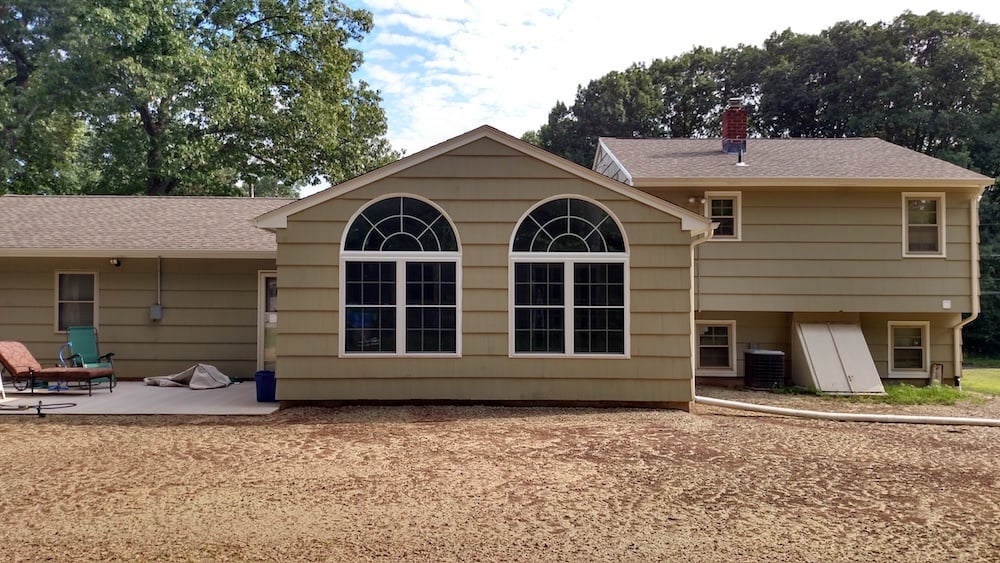How to Age in Place in Your Wallingford, CT Home
There are a lot of benefits to aging in the comfort of home. It’s oftentimes more financially efficient than moving into a long-term care facility and you get to stay in an environment you’re familiar with.

Plus, aging in place keeps you close to your loved ones, which is proven to improve your quality of life and health. According to a 12-year study of 1,100 seniors by the Rush Alzheimer’s Disease Center in Chicago, those that had frequent social interactions with friends and family had a cognitive decline rate that was 70 percent less than seniors with infrequent social interaction.
While aging in place has its upsides, preparing your home to do so can be a daunting task. Luckily, as home designers and builders, we know a thing or two on the subject! Keep reading for ways to make your home the perfect place home to age in. Or, if you have concerns about the financial and health aspects of aging, check out the National Institute on Aging’s guidance page and resources for aging in place.
Reconfigure Your Space
When you begin home prepping to age in place, it’s a good idea to start by considering the layout of your house and how it can be configured to make your life safer and more convenient. This is especially true if you plan on living with other family members like your parents, children, or grandchildren since everyone needs space for privacy and autonomy. No matter what your aging-in-place situation looks like, here are a few tips on how to use your space effectively:
- Add a bedroom on the main floor so it can be easily accessed by those who have difficulty going up and down the stairs.
- Build an Accessory Dwelling Unit or mother-in-law suite to provide aging family members privacy while keeping them nearby.
- Remodel your bathroom so it’s large enough for someone to assist with bathing. You can also add an en suite bathroom and nightlight to make it easier to navigate the dark during a middle-of-the-night bathroom break.
Make Your Home Handicap Accessible
Safety and accessibility should be your two main priorities if you plan on aging in place. Even if you don’t use a mobility device now, you may need to in the future. So, once you’ve spent some time re-conceptualizing your home, focus on making it wheelchair or walker accessible. Here’s how:
- Turn your house into a wheelchair-accessible home by enlarging your hallways to at least 36 inches wide to provide ample room for wheelchair users. While you’re at it, expand your entrances to 32 inches to achieve a wheelchair-accessible doorway size.
- Remove below-the-sink cabinets to make it easier for someone in a wheelchair to reach the sink; and reconfigure cabinets so they are not too tall, short, or deep to be reached by all household members.
- Make sure your closet is large enough to fit a wheelchair or walker.
Slip-Proof Your Steps & Floors
A small slip or fall can result in devastating health consequences for older adults. So, it’s important to keep you and your family safe by adding safety modifications to areas like your stairs, entrances, floors, and bathrooms. These modifications are relatively simple to make and can pay off in a big way. Learn more:
- Modify your stairs for the elderly by installing properly-placed handrails and lighting. Stair railings must be 34 to 38 inches high to meet the standards of the International Residential Code.
- Add flip-a-grip doorway handles on step-up entrances or exits to provide a supportive handgrip. Or, avoid the step-up altogether with a walker-and-handicap-friendly alternative to stairs: ramps.
- Slip-proof your floors by removing throw rugs, applying nonslip wax or paint, and placing non-skid treads on carpets.
Install Bathroom Supports
Getting up and down can become more difficult as you age, so it’s important to make the appropriate modifications to allow you to move around with ease. The bathroom, in particular, is a room that can be difficult to navigate. Here are a few ways to make it so anyone can move about your bathroom safely:
- Provide toilet support for the elderly by investing in a raised or high-profile toilet.
- Use rubber-backed bath mats to lessen the likelihood of falls.
- Add grab bars near the tub and a toilet guard for the elderly.
Update Your Shower
Showering in a slippery tub can be hazardous for anyone, let alone an older person or someone with a disability. Add a few shower aids for seniors to make sure showers at your house are relaxing — not perilous. Try out these ideas:
- Replace your step-up tub with an easy-access walk-in shower.
- Add a waterproof shower chair or shower standing handle for stability.
- Place a non-slip mat in the bathtub and shower.
Are you in the process of safety-proofing your home for seniors? Let us help you. We know the ins and outs of remodeling and can make your home the perfect environment for you to age in place!





.jpg)

